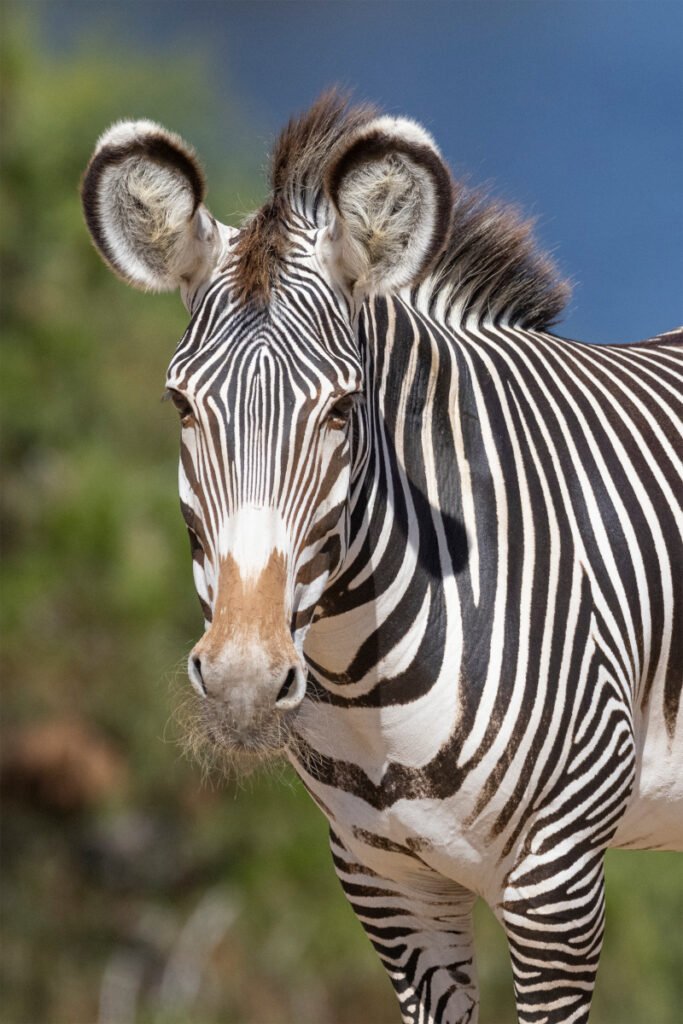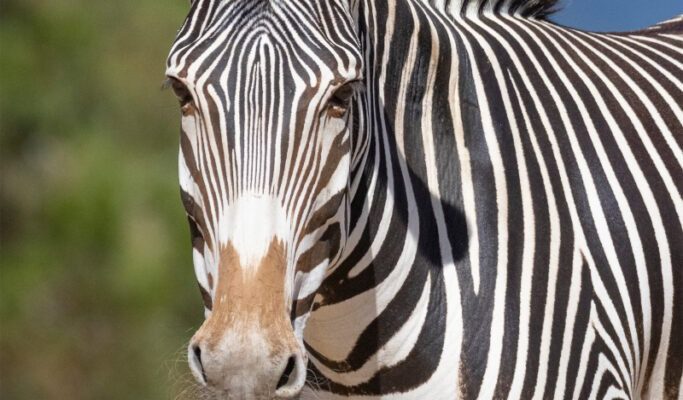
What Is the Grevy’s Zebra?
The Grevy’s zebra, known scientifically as *Equus grevyi*, is the largest of the zebra species. It’s characterized by its distinctive, narrow stripes, which are more closely spaced than those of other zebras. These stripes help it blend into the tall grasses of its habitat, providing excellent camouflage.
You might be wondering how Grevy’s zebras differ from other types. Well, unlike their more common relatives, they have a horse-like build and larger ears. Their social structure is also unique; they tend to be more solitary than other zebras, often forming small groups consisting of a mother and her offspring.
These zebras inhabit parts of Kenya and Ethiopia, primarily living in grasslands and savanna ecosystems. Sadly, their range is shrinking due to various human activities. The Grevy’s zebra serves as a reminder of the diverse wildlife that needs our attention and care.
Current Conservation Status
As of the latest assessments, the **Grevy’s zebra** is classified as endangered by the International Union for Conservation of Nature (IUCN). This status reflects a serious decline in their population, which has dropped by more than 50% in the past few decades. You might be thinking, “How can such an impressive animal be facing extinction?” The harsh reality is that several factors are at play.
A significant reason for this decline is habitat loss. As human populations expand, more land is used for agriculture and urban development. This means less space for zebras to roam and find food. Additionally, competition with livestock for grazing areas has made survival even tougher for Grevy’s zebras.
Moreover, poaching poses a serious threat. Poachers target zebras for their skins and meat, further straining their already dwindling numbers. The situation is alarming, and without intervention, there’s a risk that future generations may never see these majestic animals in the wild.
Key Threats to Grevy’s Zebras
Understanding what threatens the Grevy’s zebra is key to finding solutions. Here are the primary threats impacting their survival:
- Habitat Loss: Expanding agriculture and urbanization have led to fewer natural spaces where zebras can live and thrive.
- Competition with Livestock: As farmers graze cattle on available land, zebras often find it hard to compete for food.
- Poaching: Illegal hunting for meat and skins has a devastating effect on their population.
- Water Scarcity: Access to water is essential, and with climate change affecting rainfall patterns, zebras struggle to find enough resources.
These factors intertwine, creating a complex web of challenges that the Grevy’s zebra must navigate. It’s crucial for us to understand these threats, as they highlight the urgency behind conservation efforts.
Conservation Efforts and Initiatives
Luckily, there are ongoing efforts to help save the Grevy’s zebra. Conservation organizations and governments are working together to protect their habitats and increase awareness about their plight. Here’s what’s happening:
- Protected Areas: Establishing national parks and reserves helps to create safe spaces where Grevy’s zebras can live and breed without the threat of poaching or habitat destruction.
- Community Involvement: Local communities are being educated about the value of zebras, promoting coexistence rather than conflict between livestock and wildlife.
- Research and Monitoring: Conservationists are tracking the populations and movements of Grevy’s zebras through GPS collars, helping to gather crucial data for management strategies.
- Anti-Poaching Measures: Increased patrols and surveillance in key areas are aimed at reducing poaching incidents.
These initiatives show that it’s possible to protect the Grevy’s zebra with coordinated efforts. The road ahead is challenging, but with awareness and action, we can turn the tide.
The Role of Awareness and Education
One of the most powerful tools in conservation is education. By increasing public awareness about the plight of the Grevy’s zebra, more people can get involved in conservation efforts. Here’s how education plays a vital role:
- School Programs: Teaching children about wildlife and the importance of biodiversity instills a sense of responsibility from a young age.
- Community Workshops: Engaging local communities in discussions about conservation can help reduce human-wildlife conflict and promote sustainable practices.
- Social Media Campaigns: Online platforms can be used to share stories, facts, and calls to action, reaching a global audience.
Honestly, when people know what’s at stake, they tend to care more. Awareness can lead to funding for conservation programs and increased support for policies that benefit wildlife.
How You Can Help
Feeling inspired to make a difference? There are several ways you can contribute to the conservation of the Grevy’s zebra and wildlife in general:
- Support Conservation Organizations: Donate to or volunteer with groups dedicated to protecting wildlife and their habitats.
- Advocate: Use your voice to advocate for stronger wildlife protection policies in your community and beyond.
- Choose Sustainable Products: Be mindful of how your consumer habits impact the environment. Opt for products that don’t contribute to habitat destruction.
- Educate Others: Share what you’ve learned about the Grevy’s zebra to inspire friends and family to care about wildlife conservation.
Each small effort adds up to create a larger impact. You don’t have to be in Africa to help; your actions here can echo around the world.
The Grevy’s zebra is a remarkable creature facing immense challenges in our modern world. Its endangered status is a call to action for all of us. By understanding the threats, supporting conservation efforts, and spreading awareness, we have the chance to help preserve this unique species.
Let’s not wait until it’s too late. **Protecting the Grevy’s zebra isn’t just about saving a beautiful animal; it’s about maintaining the health of our ecosystems for future generations.** Together, we can ensure that these striking zebras continue to roam the African plains, inspiring awe and reminding us of the wonders of the natural world we share.

